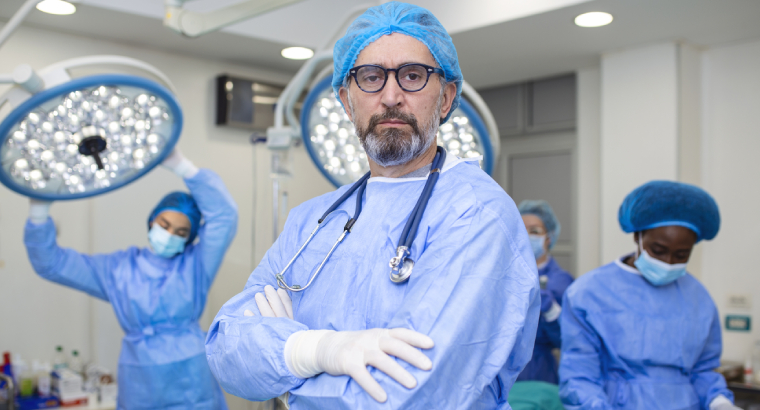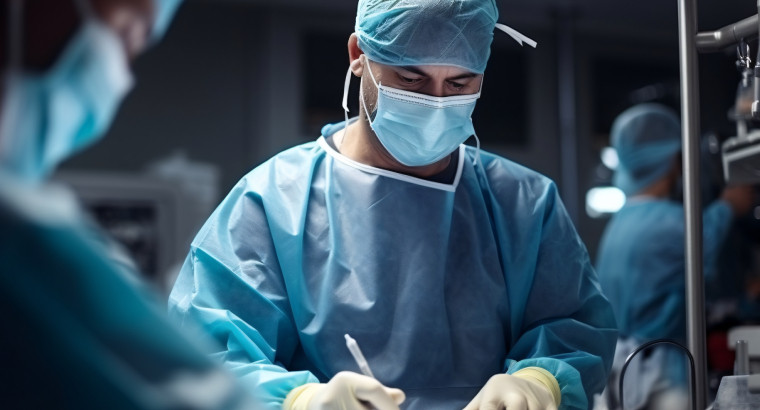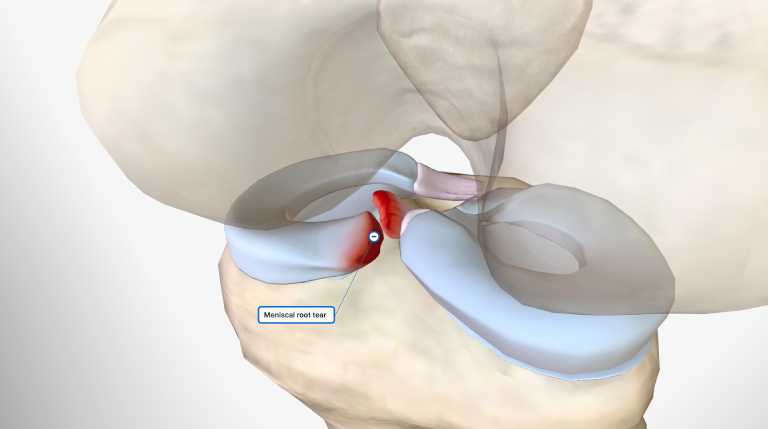
A Comprehensive Overview of ACL Injury Surgery- From Repair to Arthroscopic ACL Reconstruction
Synopsis
ACL injuries are among the most common knee injuries, particularly in athletes and active individuals. This blog provides an in-depth look at ACL injury surgery, focusing on available options, from ACL repair surgery to advanced arthroscopic ACL reconstruction. Whether you’ve suffered a partial or complete tear, understanding your surgical options is crucial for making informed decisions about your recovery. Torn ACL surgery can range from simple repairs to complete ligament reconstruction, depending on the severity of the injury. This blog will also cover what makes the best ACL surgeon stand out, including their experience and specialisation in ACL orthopaedic surgery. With the growing popularity of minimally invasive techniques like arthroscopic ACL reconstruction, patients can benefit from quicker recovery times and fewer complications. By the end of this blog, you’ll clearly understand the various surgical options available for ACL injuries and how to choose the best treatment approach for your needs.
Table of Contents
- Introduction to ACL Injury Surgery
- When is ACL Repair Surgery Sufficient?
- Torn ACL Surgery- Repair vs. Reconstruction
- The Role of Arthroscopic ACL Reconstruction in Modern Surgery
- Selecting the Best ACL Surgeon for Your Procedure
- Benefits of Minimally Invasive ACL Orthopedic Surgery
- Preparing for ACL Surgery and Post-Operative Care
- Why YKOrthopaedics is a Leader in ACL Injury Treatment
Introduction to ACL Injury Surgery
An injury to the anterior cruciate ligament (ACL) is a serious concern, especially for athletes and those who lead active lifestyles. The ACL plays a vital role in stabilising the knee during movement, and when it’s damaged, it can significantly impact mobility. ACL injury surgery is typically recommended when conservative treatments, such as physical therapy and bracing, fail to restore knee stability. The type of surgery required depends on the severity of the tear, with options ranging from ACL repair surgery for partial tears to complete ligament reconstruction for more serious injuries. Any ACL surgery aims to restore full knee function, prevent further damage, and allow patients to return to their normal activities.
When is ACL Repair Surgery Sufficient?
ACL repair surgery is most effective in partial tears or when the ligament is still attached to the bone. During this procedure, the surgeon reattaches and reinforces the torn ligament with sutures or other fixation methods. This type of surgery is generally recommended for younger patients with minor tears who wish to avoid the more extensive recovery associated with reconstruction. However, ACL repair surgery has limitations and is not always successful in preventing re-tears, especially in highly active individuals. For those with complete ligament tears or unstable knees, more advanced surgical options like arthroscopic ACL reconstruction are usually required.
Torn ACL Surgery- Repair vs. Reconstruction
Deciding between ACL repair surgery and reconstruction depends on several factors, including the extent of the tear, the patient’s activity level, and long-term recovery goals. Torn ACL surgery for complete tears almost always involves reconstruction, where the damaged ligament is replaced with a graft. This graft can be taken from the patient’s hamstring, patellar tendon (autograft), or donor (allograft). Reconstruction provides a more durable solution, particularly for those who engage in sports or physically demanding activities. The recovery timeline for ACL reconstruction is longer than for simple repairs, but it offers better stability and a lower risk of re-injury.
The Role of Arthroscopic ACL Reconstruction in Modern Surgery
Arthroscopic ACL reconstruction has revolutionised the way ACL injuries are treated. This minimally invasive technique involves small incisions, a camera (arthroscope) for visualisation, and specialised surgery instruments. The advantages of arthroscopic ACL reconstruction include:
- Reduced scarring.
- Less post-operative pain.
- A quicker return to normal activities compared to traditional open surgery.
Advanced arthroscopic techniques allow surgeons to precisely position the graft and secure it, leading to improved long-term outcomes. For patients looking for the latest in ACL orthopaedic surgery, arthroscopic ACL reconstruction is often the preferred choice.
Selecting the Best ACL Surgeon for Your Procedure
Choosing the best ACL surgeon is crucial for successful surgery and smooth recovery. The best surgeons are those with extensive experience in ACL repair and reconstruction and a deep understanding of the latest advancements in arthroscopic ACL reconstruction. When selecting a surgeon, consider their track record of successful outcomes, patient reviews, and ability to offer personalised care. A good surgeon will take the time to explain the risks and benefits of each surgical option, ensuring that you make an informed decision. Additionally, working with a surgeon specialising in ACL orthopaedic surgery provides peace of mind, knowing they are equipped to handle even the most complex cases.
Benefits of Minimally Invasive ACL Orthopedic Surgery
Minimally invasive techniques, like arthroscopic ACL reconstruction, offer several benefits over traditional open surgery. These include smaller incisions, which lead to faster healing, less post-operative pain, and a lower risk of infection. Patients who undergo minimally invasive ACL surgery typically experience quicker recovery times and can begin rehabilitation sooner, allowing them to return to normal activities more rapidly. Additionally, the precision offered by arthroscopy means that the surgeon can more accurately position the graft, improving overall knee stability. For patients seeking a balance between effective treatment and minimal disruption to their daily lives, minimally invasive ACL surgery is an ideal option.
Preparing for ACL Surgery and Post-Operative Care
Proper preparation is key to a successful ACL surgery and recovery. Before surgery, patients should undergo a thorough evaluation, including imaging studies and a physical exam, to determine the best surgical approach. Pre-operative physical therapy may be recommended to strengthen the muscles around the knee, improving outcomes after surgery. Post-ACL surgery care focuses on managing pain, reducing swelling, and gradually restoring mobility through a structured rehabilitation program. Adhering to your surgeon’s guidelines minimises complications and ensures a smooth recovery. At YKOrthopaedics, we provide comprehensive care plans tailored to each patient’s needs, guiding them through every stage of their recovery.
Why YKOrthopaedics is a Leader in ACL Injury Treatment
At YKOrthopaedics, we are committed to delivering exceptional care for patients dealing with ACL injuries. Our highly skilled surgeons specialise in ACL repair surgery and advanced arthroscopic ACL reconstruction, ensuring that each patient receives the most appropriate treatment for their specific condition. With a focus on minimally invasive techniques, personalised care, and long-term recovery, we offer a comprehensive approach to ACL injury surgery. Whether you’re considering a simple repair or a full reconstruction, YKOrthopaedics provides the expertise, technology, and support needed for a successful outcome and a quicker return to your active lifestyle.
Conclusion- Trust YKOrthopaedics for Expert ACL Surgery Care
Choosing the right provider for ACL surgery is crucial for long-term knee health and function. YKOrthopaedics offers cutting-edge surgical solutions tailored to each patient’s needs, from ACL repair surgery to arthroscopic ACL reconstruction. Our dedication to patient care and advanced surgical techniques ensure you receive the highest standard of treatment and support. Whether you’re dealing with a recent ACL injury or exploring options for recovery, trust YKOrthopaedics to guide you toward a pain-free and active life.
FAQs
ACL injury surgery can be categorised into two main types- ACL repair surgery and ACL reconstruction. ACL repair surgery is generally suitable for partial tears where the ligament can be reattached and allowed to heal. However, for more severe injuries involving complete tears, ACL reconstruction is necessary. Reconstruction involves replacing the damaged ligament with a graft, which can be taken from the patient’s tissue (autograft) or a donor (allograft). Minimally invasive techniques like arthroscopic ACL reconstruction are becoming increasingly popular for their faster recovery times and reduced post-operative complications.
Arthroscopic ACL reconstruction is a minimally invasive technique that uses small incisions and specialised instruments to perform the surgery. A camera (arthroscope) is inserted into the knee joint, allowing the surgeon to visualise the procedure on a monitor. This approach offers several advantages over traditional open surgery, including smaller incisions, less pain, reduced scarring, and quicker recovery times. Additionally, arthroscopic ACL reconstruction allows for more precise graft placement, leading to improved knee stability and a lower risk of re-injury. This technique is especially recommended for athletes and active individuals seeking a faster return to their activities.
Selecting the best ACL surgeon involves considering several factors, including the surgeon’s experience, specialisation in ACL orthopaedic surgery, and expertise in performing repair and reconstruction procedures. It’s important to choose a surgeon with a proven track record of successful outcomes and who is familiar with advanced techniques like arthroscopic ACL reconstruction. Patient reviews, the surgeon’s communication style, and willingness to tailor the procedure to your needs are also key considerations. A surgeon who prioritises personalised care and provides comprehensive post-surgery support is crucial for ensuring a smooth recovery and optimal knee function.
Recovery after torn ACL surgery varies depending on the procedure, whether repair or reconstruction. Generally, the initial recovery phase involves managing pain and swelling, followed by gentle exercises to restore range of motion. As healing progresses, physical therapy shifts to strengthening the muscles around the knee and improving joint stability. Full recovery can take 6-12 months, with patients gradually returning to normal activities as they rebuild strength and confidence in the knee. Following the surgeon’s post-operative guidelines and adhering to a structured rehabilitation program are key to achieving the best possible outcomes.
Minimally invasive ACL orthopaedic surgery, particularly arthroscopic ACL reconstruction, offers several benefits over traditional open surgery. These include smaller incisions, which result in less scarring, reduced post-operative pain, and faster recovery times. Additionally, the precision of arthroscopic techniques allows for better graft placement and knee stability. Patients can usually begin rehabilitation sooner, leading to a quicker return to sports and other activities. Minimally invasive surgery also carries a lower risk of complications, such as infections or excessive scar tissue formation. Overall, it provides an effective and patient-friendly option for treating ACL injuries.




